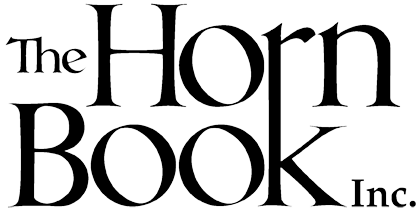
Welcome to the Horn Book's Family Reading blog, a place devoted to offering children's book recommendations and advice about the whats and whens and whos and hows of sharing books in the home. Find us on Twitter @HornBook and on Facebook at Facebook.com/TheHornBook
"Accumulated Power"
By Margaret Mahy
When I was a child, books published in the U.
When I was a child, books published in the U.S. were difficult to come by in New Zealand, dominated as it was by its trading relationship with Britain. But by the time I came to read to my daughters, the publishing world had changed. I was able to read them Blueberries for Sal as well as Peter Rabbit. Of course new ones kept on creeping in. My oldest daughter loved Kiki Goes to Camp by Charlotte Steiner at a time when I was most enthusiastic about The Boy and the Magic by Colette.
When I pull one of my own childhood favorites from the shelf, I wonder, will I still enjoy it? Has time brought me and this book to a point from which we just go in different directions? This does happen. I occasionally read The Story of Ferdinand to my grandchildren, but without the pleasure in the story I originally felt. (To hell with Hemingway! I no longer believe in the enthusiasm Ferdinand’s brothers show for the bull ring, which I now see as a place of atrocity.) The words on the page stand still. The world and the reader change around them.
Now, reading to grandchildren, I read newer authors. Eric Carle, Quentin Blake, Harve and Margot Zemach, Maurice Sendak. I read stories by New Zealanders whose stories make the immediate environment of the listening children replete with imaginative possibility. I also read them The Stinky Cheese Man, Jumanji, and Julius, the Baby of the World from signed copies acquired at ALA conferences.
But sometimes as I read familiar tales to my grandchildren, I weep. One such book, Honey Bear by Dixie Willson, was given to me by an aunt in 1939. It is a sweet, rather sentimental story, though mysterious and humorous, too. I read Honey Bear to my grandchildren and cry as I read, not because of its sentiment but because of its accumulated power. By now there is more to the story than words, pages, and pictures. The voices of my dead parents come to me out of the story, setting up profound sympathetic resonance in that echoing inner library, both voices mingling with mine as I read, yet again, this little-known book.
It was mysterious then, and it is still mysterious today, and the children I read it to watch my face as I read and stare at my tears — those outer signs of the power of the story working in an individual consciousness — with wonder.
From the March/April 1997 issue of The Horn Book Magazine: Special Issue: Family Reading.
RELATED
RECOMMENDED
ALREADY A SUBSCRIBER? LOG IN
We are currently offering this content for free. Sign up now to activate your personal profile, where you can save articles for future viewing.







Add Comment :-
Be the first reader to comment.
Comment Policy: